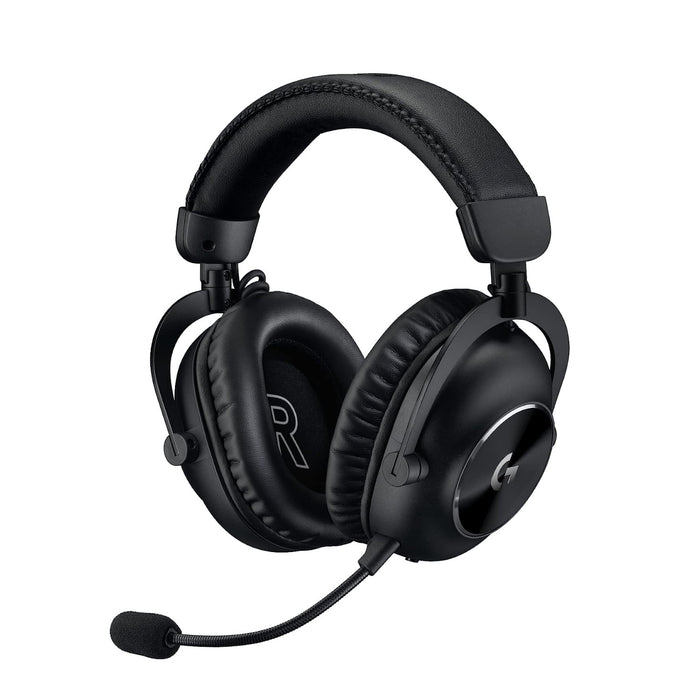Trước khi đi sâu vào các tính năng cụ thể, chúng ta hãy cùng đánh giá tổng quan về trải nghiệm người dùng trên go88 rikvip. Giao diện website được thiết kế hiện đại, tối giản nhưng không kém phần sang trọng, giúp người chơi dễ dàng tìm kiếm thông tin và các trò chơi yêu thích. Sự sắp xếp hợp lý các mục, cùng với màu sắc hài hòa tạo nên một không gian trực tuyến thân thiện và dễ chịu. Điều này đặc biệt quan trọng đối với những người chơi mới, giúp họ nhanh chóng làm quen và bắt đầu trải nghiệm.
Tính dễ sử dụng và sự thân thiện với người dùng
go88 rikvip đã tối ưu hóa trải nghiệm người dùng bằng cách sắp xếp các mục một cách logic và trực quan. Việc tìm kiếm các trò chơi, khuyến mãi hay hỗ trợ khách hàng đều diễn ra một cách nhanh chóng và dễ dàng. Giao diện responsive đảm bảo sự mượt mà trên mọi thiết bị, từ máy tính để bàn đến điện thoại di động, tạo điều kiện thuận lợi cho người chơi truy cập và tham gia bất cứ lúc nào, bất cứ nơi đâu. Sự đơn giản trong thiết kế không có nghĩa là thiếu tính năng; ngược lại, nó giúp người dùng tập trung vào trải nghiệm cốt lõi mà không bị rối mắt bởi các chi tiết thừa.
Thiết kế hiện đại và tính thẩm mỹ
Sự đầu tư vào thiết kế hiện đại và tính thẩm mỹ cao là một điểm cộng lớn của go88 rikvip. Sự kết hợp hài hòa giữa màu sắc, hình ảnh và bố cục tạo nên một không gian trực tuyến chuyên nghiệp và hấp dẫn. Việc sử dụng hình ảnh chất lượng cao và các hiệu ứng chuyển cảnh mượt mà không chỉ làm tăng tính thẩm mỹ mà còn tạo ra sự cuốn hút cho người chơi. Giao diện được thiết kế nhằm tạo ra một môi trường giải trí thư giãn và thoải mái nhất có thể, giúp người chơi tập trung vào trò chơi mà không bị phân tâm. Điều này thể hiện sự quan tâm đến trải nghiệm tổng thể của người dùng, không chỉ tập trung vào chức năng mà còn cả mặt trải nghiệm cảm quan.
Tối ưu hóa cho các thiết bị di động
Trong thời đại công nghệ phát triển như hiện nay, việc tối ưu hóa cho các thiết bị di động là một yếu tố quan trọng quyết định thành công của một website. go88 rikvip nhận thức rõ điều này và đã đầu tư tối đa để mang đến cho người dùng một trải nghiệm mượt mà trên mọi thiết bị di động, từ điện thoại thông minh đến máy tính bảng. Giao diện responsive cho phép người chơi truy cập và trải nghiệm tất cả các tính năng của website một cách dễ dàng, không bị giật lag hay lỗi hiển thị. Điều này tạo ra sự tiện lợi tối đa cho người chơi, cho phép họ tham gia vào thế giới giải trí của Hello88 bất cứ khi nào và ở bất cứ đâu.
Thế giới trò chơi đa dạng trên go88 rikvip

An ninh và bảo mật thông tin luôn là mối quan tâm hàng đầu của người chơi khi tham gia các trò chơi cá cược trực tuyến. go88 rikvip cam kết bảo vệ thông tin cá nhân và tài khoản của người chơi một cách nghiêm túc và hiệu quả.
Hệ thống bảo mật tiên tiến
Hello88 đầu tư hệ thống bảo mật tiên tiến, sử dụng công nghệ mã hóa SSL 128 bit, đảm bảo an toàn cho mọi giao dịch và thông tin cá nhân của người chơi. Hệ thống này ngăn chặn hiệu quả các hoạt động gian lận và xâm nhập trái phép. Việc thường xuyên cập nhật và nâng cấp hệ thống bảo mật giúp đảm bảo an ninh cho người chơi trong thời gian dài. Người chơi có thể yên tâm rằng thông tin cá nhân và tài khoản của họ được bảo vệ một cách an toàn tuyệt đối.
Chính sách bảo mật rõ ràng và minh bạch
go88 rikvip có chính sách bảo mật rõ ràng và minh bạch, được công khai trên website. Chính sách này đề cập đến các biện pháp bảo mật mà Hello88 sử dụng, cũng như các quyền của người chơi liên quan đến thông tin cá nhân của họ. Sự minh bạch trong chính sách bảo mật giúp tăng sự tin tưởng của người chơi đối với nhà cái. Người chơi có thể đọc kỹ chính sách bảo mật để hiểu rõ các quyền và nghĩa vụ của mình.
Cam kết bảo vệ thông tin người dùng
Hello88 cam kết bảo vệ thông tin người dùng là nguyên tắc hoạt động cốt lõi. Nhà cái luôn tuân thủ các quy định về bảo mật thông tin và luôn nâng cao các biện pháp bảo mật để đáp ứng những yêu cầu nghiêm ngặt nhất. Sự an toàn của người chơi luôn được đặt lên hàng đầu, tạo điều kiện cho người chơi tận hưởng trò chơi một cách thư giãn và an tâm. Đây là cam kết không chỉ trên giấy tờ mà được thể hiện qua hành động cụ thể trong việc bảo vệ thông tin người dùng.
Kết luận

Một trong những yếu tố quan trọng làm nên sự thành công của một nhà cái trực tuyến chính là chính sách khuyến mãi và dịch vụ hỗ trợ khách hàng. go88 rikvip luôn đặt sự hài lòng của khách hàng lên hàng đầu, thể hiện qua các chương trình khuyến mãi hấp dẫn và đội ngũ hỗ trợ chuyên nghiệp, tận tâm.
Chương trình khuyến mãi hấp dẫn
Tìm hiểu thêm
mb66 dang nhapHello88 thường xuyên tổ chức các chương trình khuyến mãi hấp dẫn với nhiều phần thưởng giá trị dành cho người chơi. Từ khuyến mãi chào mừng thành viên mới đến các chương trình khuyến mãi hàng tuần, hàng tháng, người chơi luôn có cơ hội nhận được nhiều ưu đãi hấp dẫn. Sự đa dạng của các chương trình khuyến mãi giúp đáp ứng nhu cầu và sở thích của nhiều đối tượng khách hàng khác nhau. Việc cập nhật thông tin khuyến mãi một cách thường xuyên giúp người chơi không bỏ lỡ bất kỳ cơ hội nào.
Dịch vụ hỗ trợ khách hàng chuyên nghiệp
Đội ngũ hỗ trợ khách hàng của Hello88 được đào tạo bài bản và chuyên nghiệp, luôn sẵn sàng hỗ trợ người chơi 24/7 thông qua nhiều kênh liên lạc khác nhau như chat trực tuyến, email, điện thoại. Sự phản hồi nhanh chóng và chính xác giúp giải quyết mọi thắc mắc và vấn đề của người chơi một cách hiệu quả. Sự tận tâm và chuyên nghiệp của đội ngũ hỗ trợ tạo nên sự tin tưởng và an tâm cho người chơi, giúp họ tận hưởng thế giới giải go88 rikvip một cách thoải mái nhất.
Phương thức thanh toán đa dạng và an toàn
Việc đảm bảo sự an toàn và tiện lợi trong giao dịch thanh toán là một trong những yếu tố quan trọng thu hút người chơi. go88 rikvip cung cấp nhiều phương thức thanh toán đa dạng, phù hợp với nhiều đối tượng khách hàng khác nhau, bao gồm chuyển khoản ngân hàng, ví điện tử,… Hệ thống thanh toán được bảo mật nghiêm ngặt, giúp đảm bảo an toàn thông tin cho người chơi. Quá trình nạp và rút tiền diễn ra nhanh chóng và thuận tiện, giúp người chơi tập trung vào trải nghiệm game mà không bị gián đoạn.
An ninh và bảo mật thông tin trên go88 rikvip

go88 rikvip tự hào sở hữu một kho game khổng lồ với đủ loại thể loại, từ những trò chơi kinh điển đến những tựa game mới nhất, đáp ứng mọi nhu cầu của người chơi. Sự đa dạng này không chỉ thể hiện ở số lượng mà còn ở chất lượng, với đồ họa sắc nét, âm thanh sống động và gameplay hấp dẫn.
Tìm hiểu thêm
fa88Thể loại game cá cược phong phú
Hello88 cung cấp một loạt các trò chơi cá cược hấp dẫn, thu hút sự chú ý của đông đảo người chơi. Từ cá cược thể thao với đầy đủ các giải đấu lớn nhỏ trên toàn thế giới, đến những trò chơi casino trực tuyến với sự tham gia của các Dealer chuyên nghiệp, người chơi có thể tha hồ lựa chọn và tìm thấy trò chơi phù hợp với sở thích của mình. Không chỉ dừng lại ở đó, Hello88 còn liên tục cập nhật những trò chơi mới nhất, đảm bảo đem lại sự mới mẻ và hứng thú lâu dài cho người chơi. Điều này giúp người chơi luôn cảm thấy được chiều chuộng và luôn có những trải nghiệm mới mẻ.
Trò chơi Slot đa dạng và hấp dẫn
Slot game luôn là một trong những thể loại trò chơi được yêu thích nhất tại các nhà cái trực tuyến, và Hello88 cũng không ngoại lệ. Với hàng trăm trò chơi Slot khác nhau, từ những trò chơi cổ điển đến những trò chơi hiện đại với đồ họa 3D sống động, người chơi sẽ được đắm chìm trong thế giới giải trí đầy màu sắc và cơ hội thắng lớn. Mỗi trò chơi đều có những tính năng đặc biệt riêng, giúp tạo nên sự đa dạng và hấp dẫn, giúp người chơi không bao giờ cảm thấy nhàm chán. Hơn nữa, việc thường xuyên cập nhật những trò chơi Slot mới giúp đảm bảo sự phong phú và hấp dẫn lâu dài cho người chơi.
Casino trực tuyến đẳng cấp quốc tế
Với casino trực tuyến trên go88 rikvip, người chơi sẽ được trải nghiệm không gian sòng bài đẳng cấp quốc tế ngay trên màn hình của mình. Với sự tham gia của các Dealer chuyên nghiệp, những trò chơi như Baccarat, Roulette, Blackjack,… được tái hiện chân thực và sống động. Hệ thống phát trực tiếp chất lượng cao đảm bảo trải nghiệm mượt mà và không bị gián đoạn. Đặc biệt, sự minh bạch và công bằng trong quá trình chơi game được đảm bảo tuyệt đối, mang đến cho người chơi sự an tâm và tin tưởng.
Chính sách khuyến mãi và hỗ trợ khách hàng trên go88 rikvip

go88 rikvip là điểm đến lý tưởng cho những ai yêu thích sự đa dạng và kịch tính của thế giới giải trí trực tuyến. Tại đây, bạn không chỉ tìm thấy những trò chơi cá cược hấp dẫn mà còn được trải nghiệm một giao diện thân thiện, dễ sử dụng và dịch vụ khách hàng chuyên nghiệp. Khám phá ngay những điều thú vị mà go88 rikvip mang lại để có những giờ phút thư giãn tuyệt vời nhất.
Giao diện và trải nghiệm người dùng trên go88 rikvip









